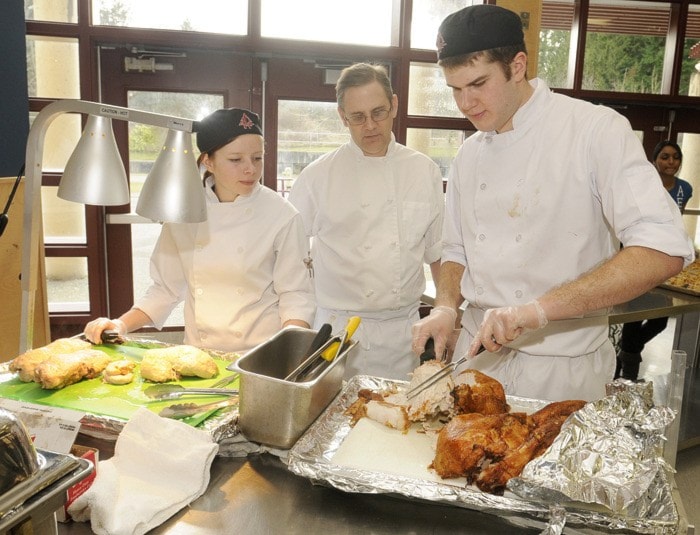Fraser Valley farmers have joined together with schools throughout the Lower Mainland to provide students with a chance to learn culinary skills using locally grown produce.
Through B.C. Agriculture in the Classroom Foundation (BCAITC), a pilot project called Take a Bite out of B.C. was launched in 2009, giving chef instructors at various schools the opportunity to feature locally grown foods in their teaching kitchens.
Initially the idea for the program came from the B.C. Culinary Arts Association, which wanted to use more local ingredients in their cooking classrooms. However, the costs were high and the system of distribution was inefficient.
BCAITC, a non-profit organization, was able to bring the chefs and the producers together, and that partnership has blossomed into the current program that is now running in 37 schools provincewide – including 10 in Surrey and three in North Delta.
"These kids are getting to see the difference between working with fresh local foods versus frozen, imported, shrink-wrapped foods," says Lindsay Babineau of BCAITC. "In the past, so much of the produce came from the U.S."
The project also supports the local economy and protects the environment by using homegrown ingredients.
All the products are donated to the program by more than 40 agricultural commodity groups and B.C. producers of meat, poultry, cheese, fruit and vegetables.
And with so many restaurants now using locally grown products, stakeholders see the advantage in introducing quality produce to potential future chefs.
Teaching Chef and Ace-It (Accelerated Credit Enrollment in Industry Training) instructor Mike Doyle of Tamanawis Secondary School, the only school in Surrey offering post-secondary credit in culinary arts, is thrilled with the program.
"In the past we would often show students how to de-bone a chicken using a single bird. Now every student has a chicken of their own, plus they learn to use all parts of the bird to make stock and soup as well."
Looking out at the line-up of students waiting to get into the cafeteria, Doyle is also working on getting his students to eat healthier.
"Often, root vegetables are more difficult to prepare but the way we produce them the kids love them." he says.
For more information about the B.C. Agriculture in the Classroom Foundation, visit http://www.aitc.ca/
